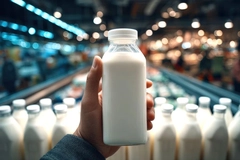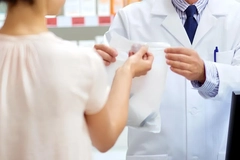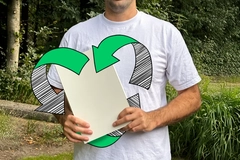Plymouth Marine Laboratory investigates bioplastic impact on oceans
 Rachel Coppock, a marine ecologist at the PML and part of the team behind the ongoing research (All image credits: Jon White).
Rachel Coppock, a marine ecologist at the PML and part of the team behind the ongoing research (All image credits: Jon White). The UK government’s topic grant for the research of “Biodegradable Bioplastics (BBP) — Assessing Environmental Risk” aims to address gaps in knowledge about how the increasingly common material breaks down in nature. We speak to an expert from the Plymouth Marine Laboratory (PML), collaborating with the University of Plymouth and the University of Bath, all based in the UK, about her observations thus far.
“Biodegradable plastics don’t fall within that circular economy model of being able to take, make and then reuse or recycle,” Dr. Rachel Coppock, marine ecologist at PML and part of the team behind the ongoing research, tells Packaging Insights.
“It’s really important to make sure that any alternatives, including biodegradable plastics, are better than what we’ve currently got and that we’re not jumping from the frying pan into the fire. We need to fully understand what we’re swapping these plastics for and what impact they might have on organisms and ecosystems.”
Coppock tells us more about what is behind the rise of BBP use for packaging and other uses, the aims of PML’s research and the role its Mesocosm facility plays by mirroring ocean conditions. She also highlights some of the prospective policy implications of the investigation.
The rise and impact of BBP
Plastic and microplastic pollution is now widespread in the environment. “Plastic can enter the marine environment through many different avenues, like mismanaged waste, littering run-off from fields and also roads where they can be released directly into the sea during storms when drains are opened,” says Coppock.
“In order to tackle plastic pollution, we need many different prongs, including reducing the production of plastic in the first place and changing our relationship with it so that we give plastic products more value and want to reuse them.”
“One of these prongs has led to the development of BBP, which can claim to fully biodegrade in short timescales, but generally, full degradation requires specific conditions that perhaps aren’t available in nature.”
 Rachel Coppock and the Mesocosm.The ecologist points out that the vast majority of plastic is still produced from conventional, non-biodegradable polymers. Still, as with conventional plastic, BBP will also break down into smaller and smaller pieces until they become microplastics.
Rachel Coppock and the Mesocosm.The ecologist points out that the vast majority of plastic is still produced from conventional, non-biodegradable polymers. Still, as with conventional plastic, BBP will also break down into smaller and smaller pieces until they become microplastics.
“Then these can be ingested by a huge range of animals, right from the very small zooplankton near the base of the food chain up to like large baleen whales, and we know that microplastics can then cause harm.”
Like conventional plastics, BBP can contain a whole array of chemicals that are included during manufacture to make the plastics flexible, durable and colorful.
“Some of these chemicals can be released as a product breakdown in the natural environment, and some of them are known to adversely affect the environment and also human health — there are some endocrine disrupting chemicals,” says Coppock.
“In fact, one of the most surprising things that I found is the amount of chemicals that are used not only in conventional plastics but also in BBP to give them the properties that they need to be functional.”
The Mesocosm
The PML’s Mesocosm facility is a large, temperature-controlled laboratory that allows scientists to pump seawater straight into the lab and mimic some of the conditions at sea while also keeping that really controlled environment.
“This means that we can carry out quite large-scale experiments using large volumes of water,” says Coppock.
She further highlights that this latest experiment carried out in the Mesocosm aimed to respond to a number of key questions: “Where does the BBP end up when it enters the coastal system? For example, Is it buried in the sediments? How deep does it get buried? Is it in the water column? Do we find it inside the animals? And also, what harm might it cause to marine animals and to their ecosystems?”
Coppock says that the PML team was able to design a system that has sediment and a constant flow of seawater with sediment-dwelling invertebrates living within the sediment and also some zooplankton in the overlying water, creating “a miniature representation of the coastal environment,” while keeping all of the systems controlled.
The only difference with the natural environment is the scientists’ ability to control which type of plastic the living creatures are exposed to.
“We looked at BBP and conventional plastic. PE is very light and not a dense plastic, so it floats quite a lot. We noticed that BB is the complete opposite. Because It’s much denser, it ends up sinking down. So, where we might see some of the differences in how they might interact with the environment.”
 The PML’s Mesocosm facility allows scientists to pump seawater straight into the lab and mimic some of the conditions at sea.Policy implications
The PML’s Mesocosm facility allows scientists to pump seawater straight into the lab and mimic some of the conditions at sea.Policy implications
Discussing the potential regulatory and policy implications of her ongoing research, Coppock points out that there are currently standard tests for manufacturers to assess the degradability of their materials or products, which are generally limited to biodegradation in a very controlled environment.
“So quite often, that’s under high temperatures and conditions that just aren’t available in nature. Our project partners at the University of Plymouth and Bath will be able to report degradation times of different biodegradable products in different natural compartments, including in the air, soil and the marine environment, which we hope will be able to guide regulations.”
“There’s been a two-year degradation study in the environment, and all of our findings from both the degradation study and also the toxicological studies will be used to prepare an ecological risk assessment, which can then be used to inform policy decisions and hopefully be able to guide manufacturing choices.”
“I think there’s so much out there at the moment; there are a lot of ways that things could go. So we’re hoping that our results might be able to help better inform choices for the future,” Coppock concludes.











